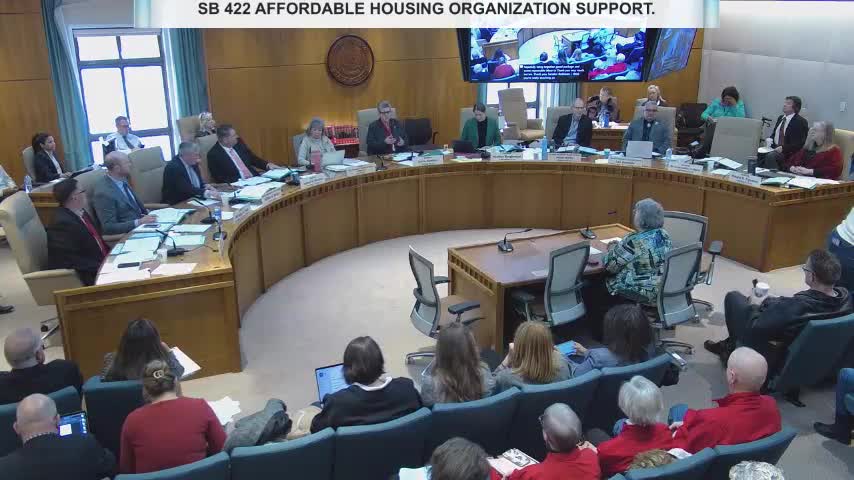New bill raised procurement caps to accelerate construction projects across New Mexico
March 08, 2025 | Senate, Legislative, New Mexico
This article was created by AI summarizing key points discussed. AI makes mistakes, so for full details and context, please refer to the video of the full meeting. Please report any errors so we can fix them. Report an error »

The New Mexico Legislature's Senate Committee on Tax, Business, and Transportation convened on March 8, 2025, to discuss a significant bill aimed at increasing procurement caps for construction projects across the state. The proposed legislation seeks to raise these caps to help cities, counties, and school districts manage rising construction costs and expedite project completion.
Acting Secretary of the General Services Department (GSD), Anna Silva, expressed support for the bill, highlighting its potential to streamline the procurement process. The bill would allow entities to bypass lengthy Request for Proposal (RFP) processes, enabling quicker access to contractors and facilitating the use of available funds for public projects. Senator Gallegos, a key proponent of the bill, emphasized that the current procurement limits hinder timely project execution, especially as construction costs continue to escalate.
The committee heard from various stakeholders, including lobbyists and representatives from educational organizations, who voiced strong support for the legislation. Bianca Gutierrez from the Gordian Group noted that the existing cap of $12.5 million over ten years restricts contractors' ability to engage in state projects, thereby delaying essential road and infrastructure improvements.
Senator Campos, another co-sponsor, reiterated the importance of adapting procurement practices to current economic conditions, stating that the bill is a necessary step to ensure that projects are completed efficiently and within budget. The committee also discussed the challenges posed by rising labor and material costs, with some projects reportedly reaching as high as $1,000 per square foot.
The proposed changes include increasing the cap for architectural and engineering services from $7.5 million to $15 million over a four-year period, a move aimed at accommodating the growing demands of educational and municipal projects. While some committee members raised concerns about potential cost increases associated with higher caps, proponents argued that the adjustments would ultimately lead to more effective use of taxpayer dollars.
As the committee prepares to move forward, the bill's supporters remain optimistic about its potential to enhance public infrastructure development and address the pressing needs of New Mexico's communities. The next steps will involve further discussions and potential amendments before the bill is put to a vote.
Acting Secretary of the General Services Department (GSD), Anna Silva, expressed support for the bill, highlighting its potential to streamline the procurement process. The bill would allow entities to bypass lengthy Request for Proposal (RFP) processes, enabling quicker access to contractors and facilitating the use of available funds for public projects. Senator Gallegos, a key proponent of the bill, emphasized that the current procurement limits hinder timely project execution, especially as construction costs continue to escalate.
The committee heard from various stakeholders, including lobbyists and representatives from educational organizations, who voiced strong support for the legislation. Bianca Gutierrez from the Gordian Group noted that the existing cap of $12.5 million over ten years restricts contractors' ability to engage in state projects, thereby delaying essential road and infrastructure improvements.
Senator Campos, another co-sponsor, reiterated the importance of adapting procurement practices to current economic conditions, stating that the bill is a necessary step to ensure that projects are completed efficiently and within budget. The committee also discussed the challenges posed by rising labor and material costs, with some projects reportedly reaching as high as $1,000 per square foot.
The proposed changes include increasing the cap for architectural and engineering services from $7.5 million to $15 million over a four-year period, a move aimed at accommodating the growing demands of educational and municipal projects. While some committee members raised concerns about potential cost increases associated with higher caps, proponents argued that the adjustments would ultimately lead to more effective use of taxpayer dollars.
As the committee prepares to move forward, the bill's supporters remain optimistic about its potential to enhance public infrastructure development and address the pressing needs of New Mexico's communities. The next steps will involve further discussions and potential amendments before the bill is put to a vote.
View full meeting
This article is based on a recent meeting—watch the full video and explore the complete transcript for deeper insights into the discussion.
View full meeting
